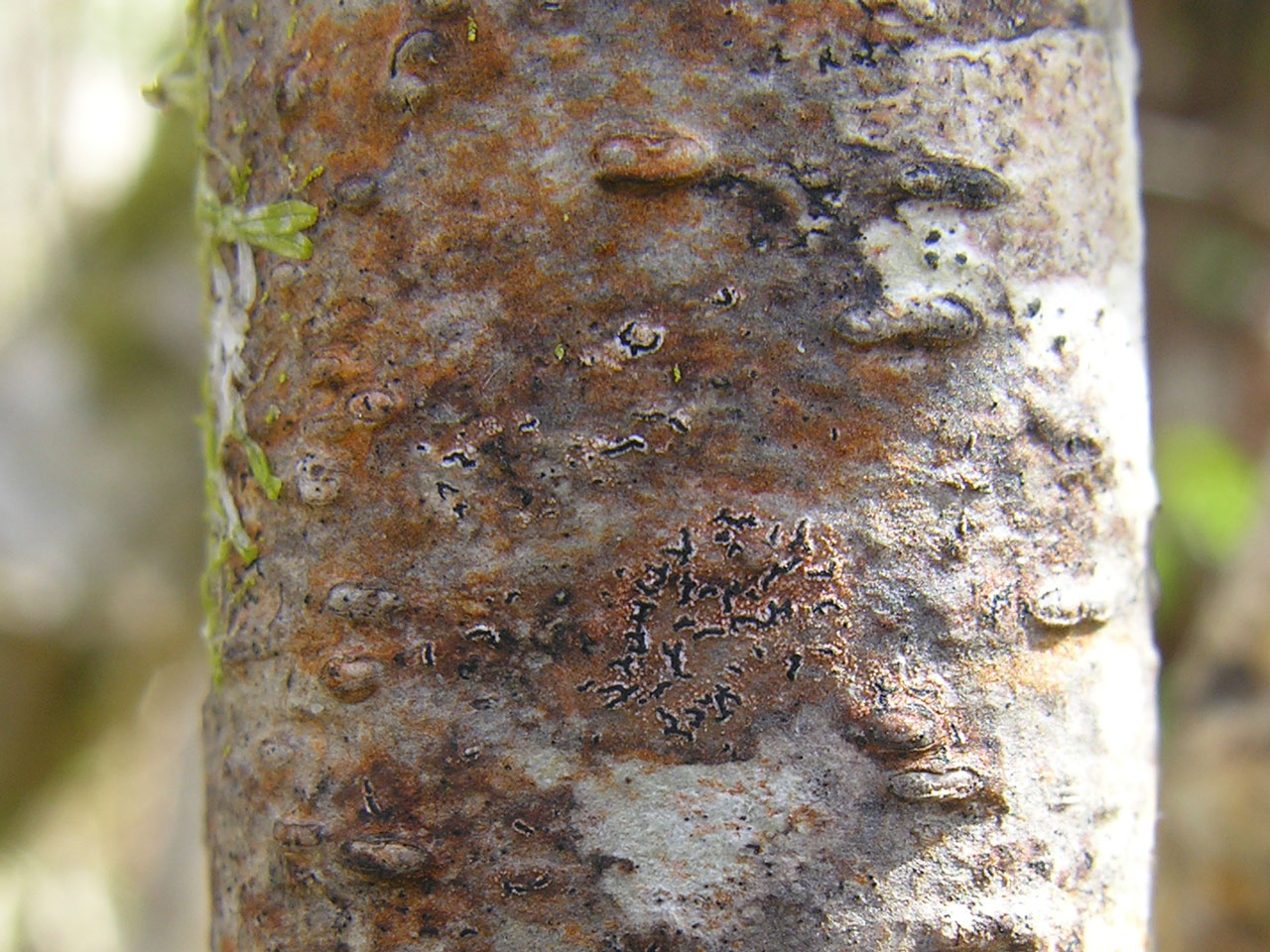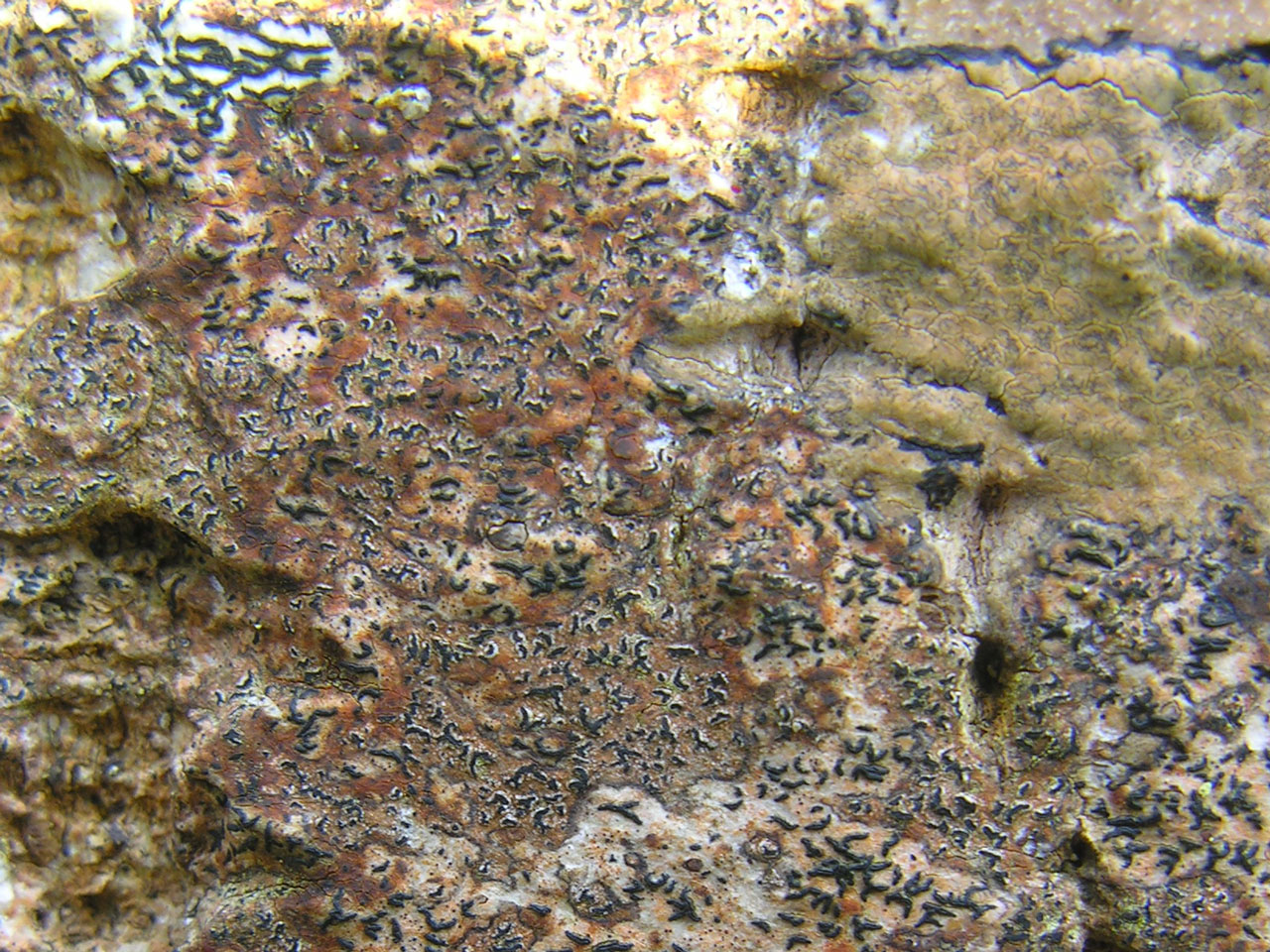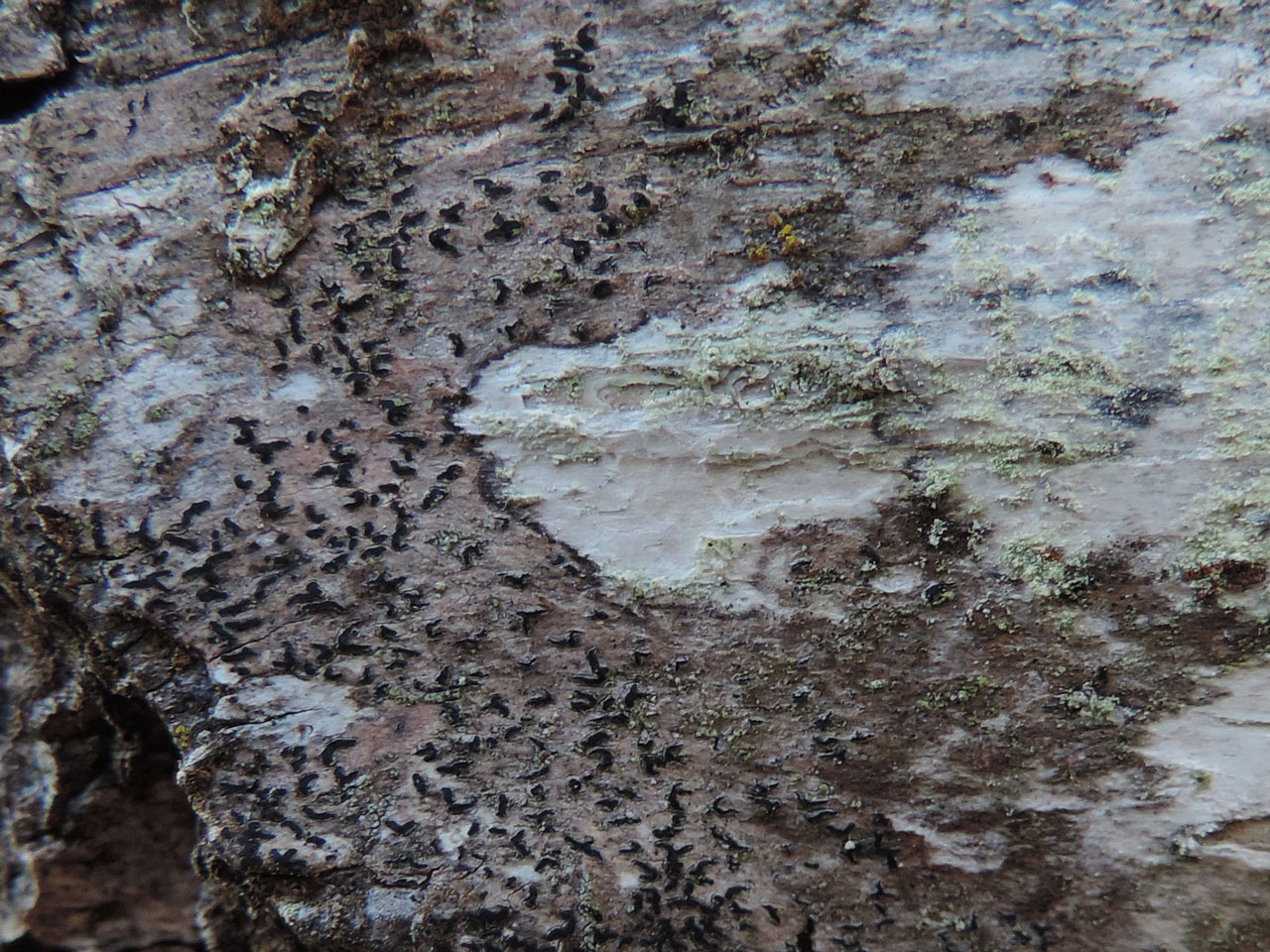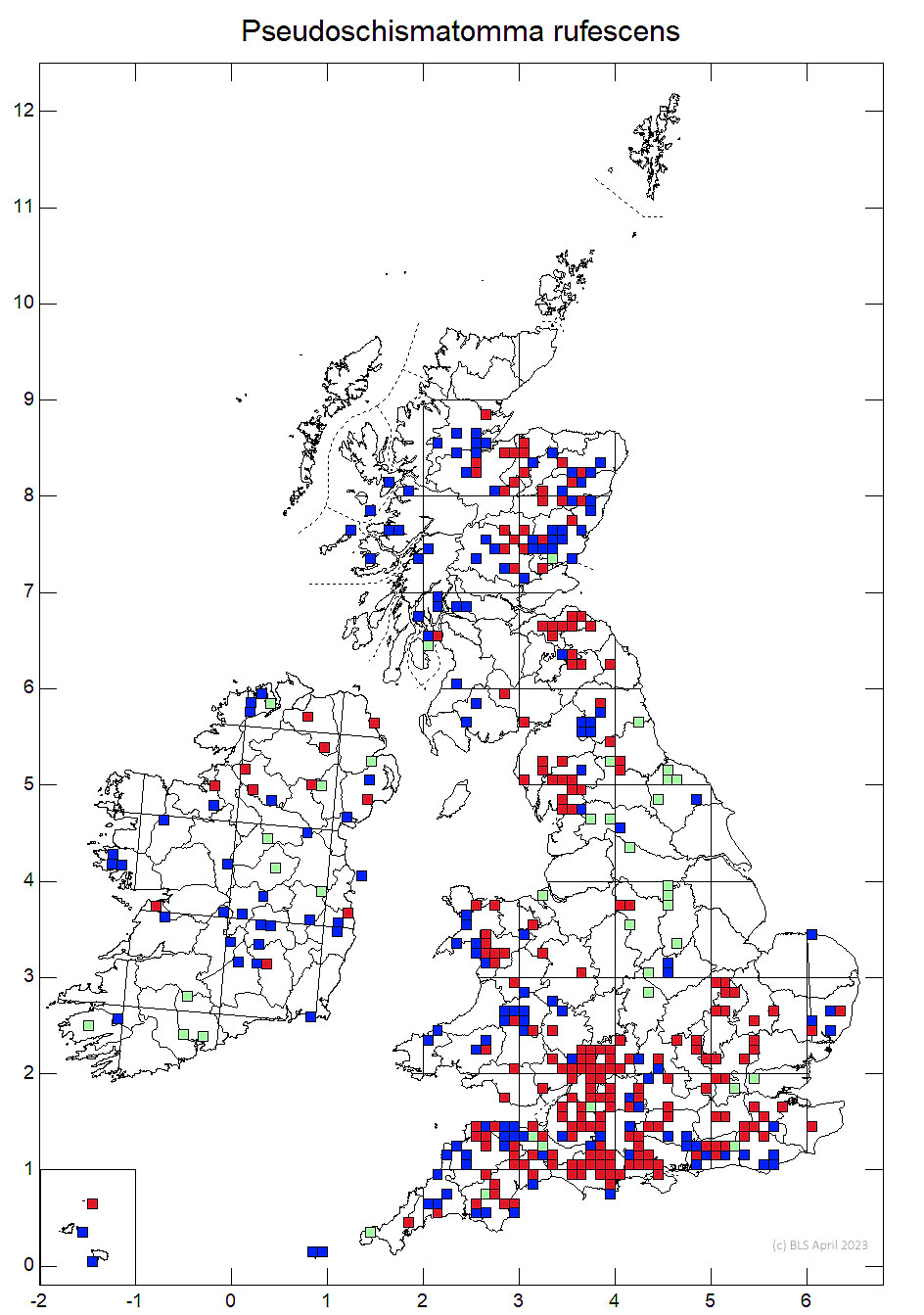Pseudoschismatomma rufescens is one of the easier Opegrapha s. lat. species to identify in the field; the frequently present white dotting on the thallus, also often forming a raised pseudothalline exciple around the apothecia is distinctive. Found on smooth shaded nutrient-rich bark on a range of broad-leaved trees, mainly in lowland areas. It appears increasing in frequency, especially areas formerly acidified by pollution.
Thallus thin, smooth or finely rimose-cracked with white dotting (either hyphal bundles or crystalline deposits), sometimes delimited by a dark prothallus and mosaic-forming, dull olive to red-brown, rarely grey. Apothecia (0.25–) 0.32–0.5 (–1) × 0.09–0.15 (–0.3) mm, immersed, sometimes elevated on a thalline cushion, curved or substellate, usually numerous and often contiguous; disc fully exposed, surrounded by a very thin exciple (K–) and sometimes a thin persistent whitish raised pseudothalline exciple formed from aggregations of the thalline dots; exciple K–; epithecium brown; hymenium 50–60 µm tall, K–. Ascospores 3-septate, (15–) 17–27 × 3–5 µm, fusiform, often curved, without a gelatinous sheath. Conidia 4–8 × 0.8–2 µm, variable, straight or curved. Thallus C–, K–, KC–, Pd–, UV– (no lichen products detected by TLC).
Characterised by the small, immersed, often slightly raised apothecia with a fully exposed disc, thin true exciple that is often surrounded by a thin whitish pseudothalline margin, and curved, fusiform ascospores. P. rufescens resembles the rare Schismatomma ricasolii, but the true exciple of the former species is always clearly visible in sections and the ascospores are shorter.
On smooth shaded nutrient-rich bark of broad-leaved trees, particularly Ash but also widely Sycamore, Hazel, Beech and Elm, in wayside and woodland sites.
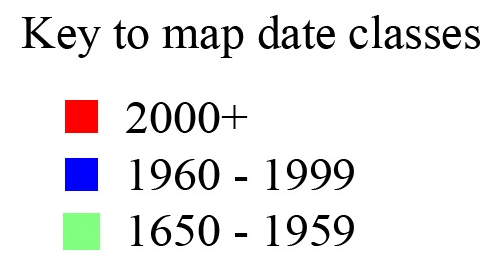
Was local but seems to be rapidly increasing and becoming common in lowland areas. Throughout Britain, scattered in Ireland.
Cannon, P., Aptroot, A., Coppins, B., Ertz, D., Sanderson, N., Simkin, J. & Wolseley, P. (2023). Arthoniales: Roccellaceae [revision 1], including the genera Cresponea, Dendrographa, Dirina, Enterographa, Gyrographa, Lecanactis, Ocellomma, Pseudoschismatomma, Psoronactis, Roccella, Schismatomma and Syncesia. Revisions of British and Irish Lichens 32: 1-22.
Text by Neil A Sanderson
